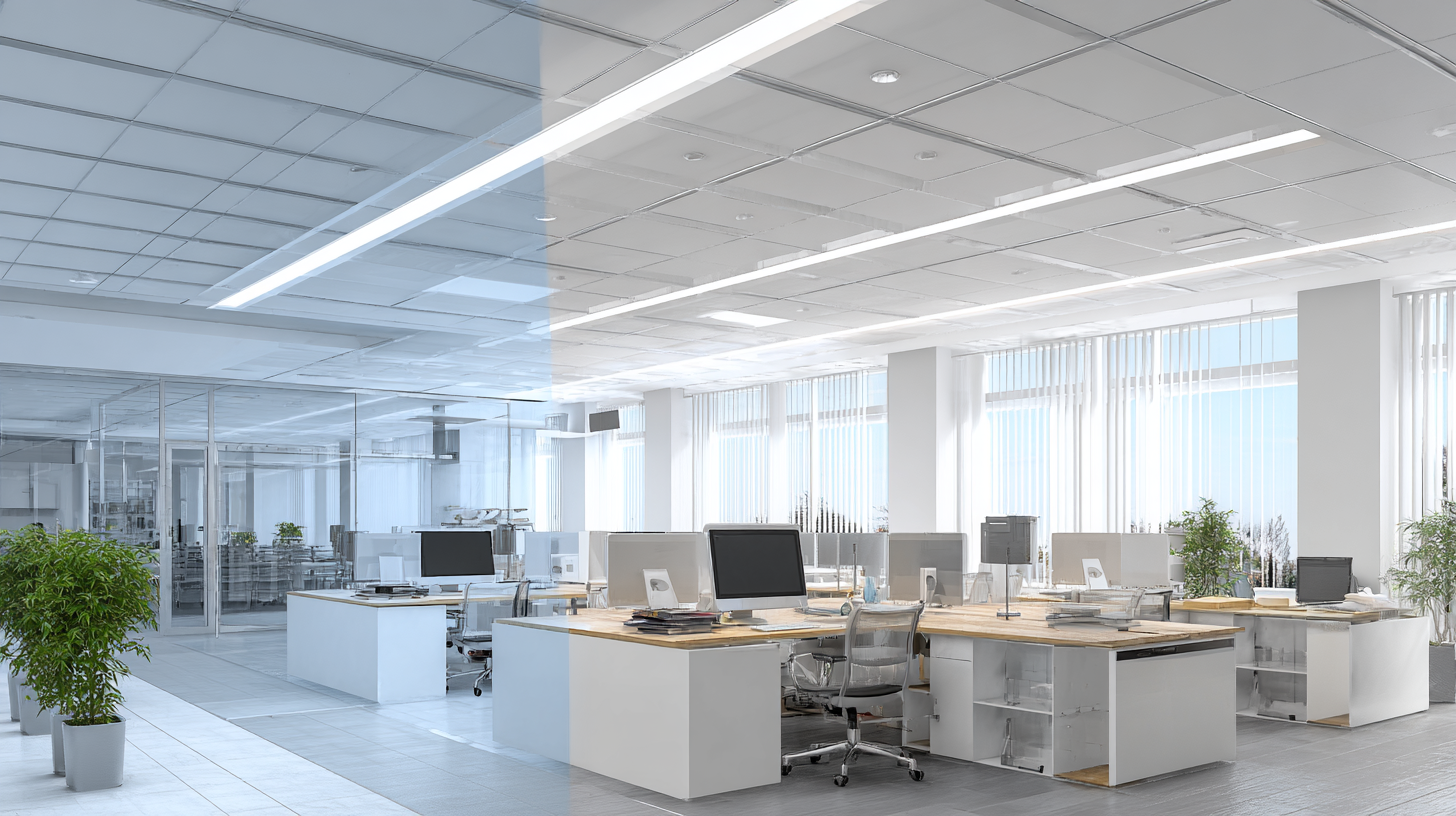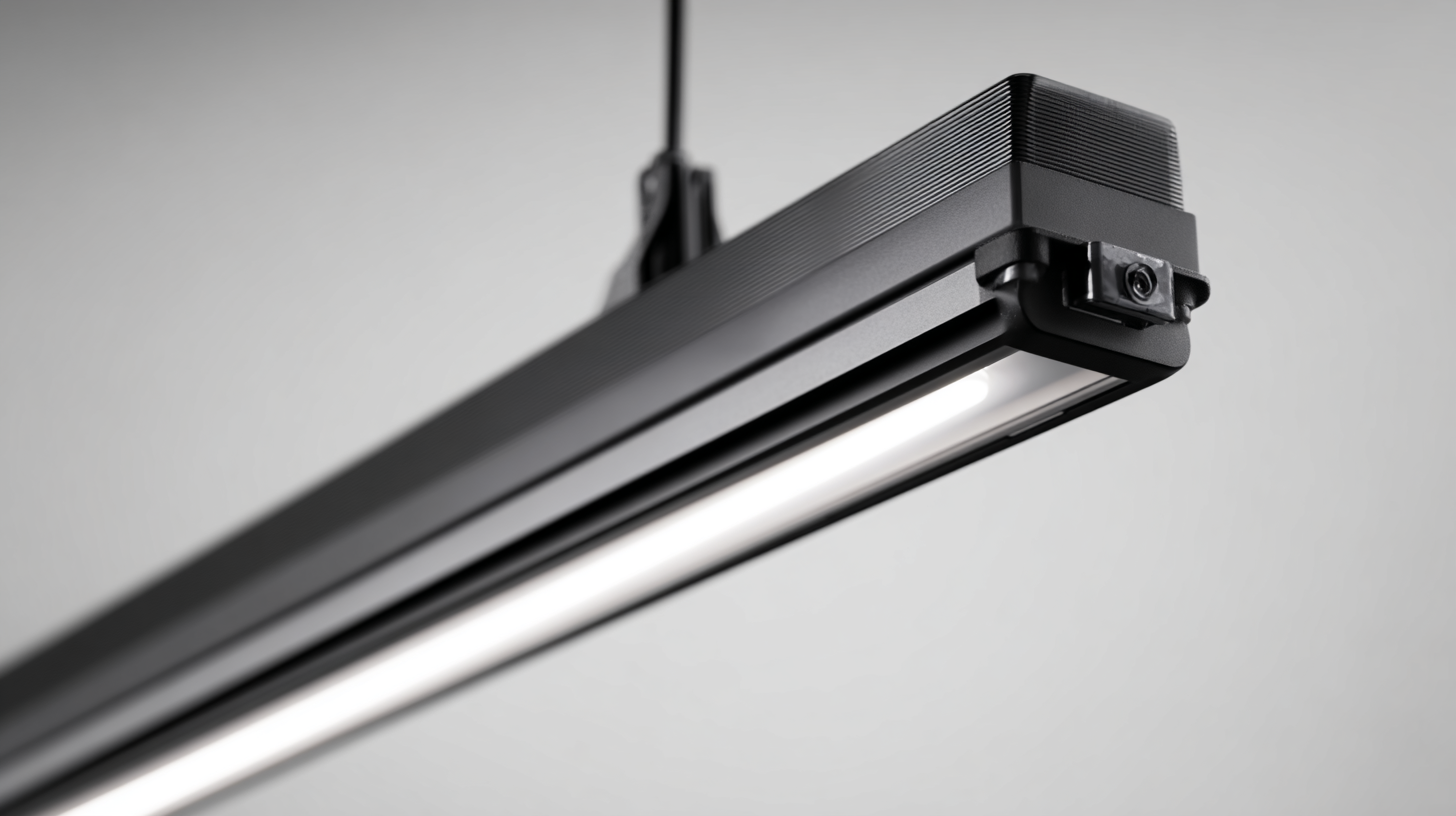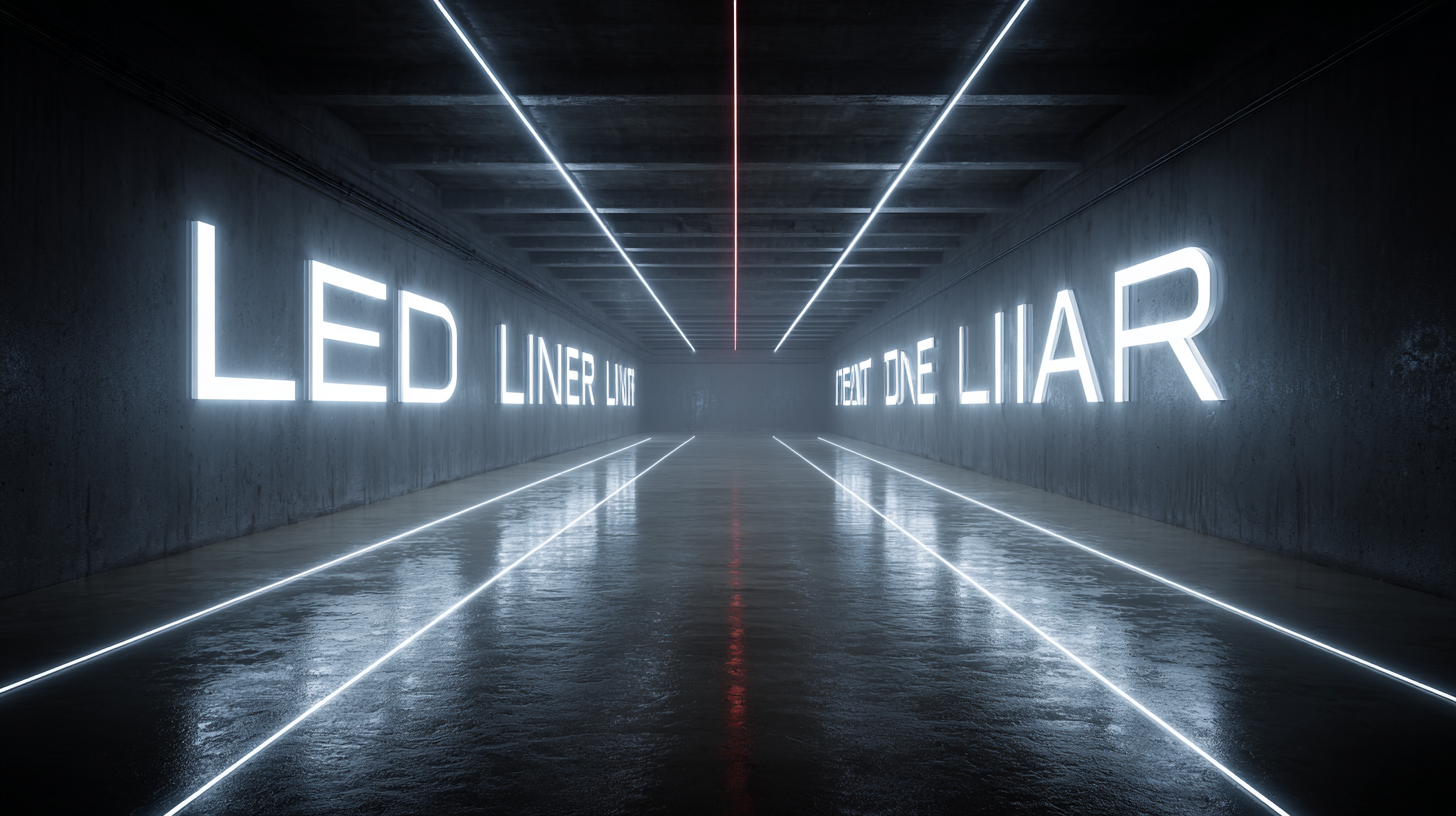How to Choose the Most Energy Efficient LED Linear Light for Your Business
In today's rapidly evolving business landscape, energy efficiency has become a pivotal concern for organizations striving to reduce operational costs and minimize their environmental footprint. According to the U.S. Department of Energy, LED linear lights can use up to 75% less energy than traditional incandescent lighting, significantly contributing to energy savings. This innovative lighting solution not only enhances the aesthetic of commercial spaces but also offers impressive longevity, with a lifespan of over 50,000 hours, reducing the frequency of replacements. As businesses increasingly adopt sustainable practices, selecting the most energy-efficient LED linear light has emerged as a crucial decision. By understanding the various options and their benefits, businesses can align their lighting choices with their environmental goals while enjoying enhanced workspace productivity and cost-effectiveness.

Understanding LED Linear Light Technology and Its Alternatives
When exploring LED linear light technology, understanding the various alternatives is crucial for making an informed decision. LED linear lights stand out due to their energy efficiency and long lifespan, but there are alternatives like fluorescent and halogen lights that some businesses might still consider. Fluorescent lights, while less efficient than LEDs, can sometimes provide a warmer light for specific settings. Halogen lights, though bright and appealing, consume more energy and generate significant heat, which can increase cooling costs in a commercial environment.
**Tip 1:** Always compare the lumen output and wattage of different lighting options. This will help gauge the true energy efficiency and lighting effectiveness, ensuring you choose a solution that meets your business needs.
**Tip 2:** Look for advanced LED features such as dimming capabilities and color temperature adjustments. These functionalities not only enhance the aesthetic of your space but can further optimize energy usage during off-peak hours.
Ultimately, discerning the right type of lighting requires a comprehensive understanding of both LED technology and its alternatives, considering factors like energy savings, maintenance, and overall performance within your business operations.

Comparing Energy Efficiency Metrics: LED vs. Traditional Lighting
When comparing energy efficiency metrics, LED lighting stands out significantly against traditional lighting options, such as incandescent and fluorescent bulbs. According to the U.S. Department of Energy, LED lights consume up to 75% less energy than incandescent lighting and have a lifespan that is 25 times longer. This impressive longevity not only reduces replacement costs but also minimizes the environmental impact associated with frequent disposal of waste fixtures.
Another critical metric to consider is lumens per watt (lm/W), which measures how effectively a light source converts power into visible light. LEDs typically yield between 80 and 100 lm/W, significantly outperforming traditional fluorescent lights at 50-70 lm/W and incandescent bulbs at merely 10-17 lm/W. A report from the Efficient Lighting Initiative highlights that by transitioning to high-performance LED lighting, businesses can achieve substantial reductions in energy costs, with some recording savings of 70% on their electricity bills. Adopting LED technology not only brings cost savings but also aligns with sustainability goals, making it an essential consideration for companies aiming to boost their energy efficiency.

The Importance of Lumens and Wattage in LED Selection
When selecting the most energy-efficient LED linear light for your business, understanding the importance of lumens and wattage is crucial. Lumens measure the amount of light emitted by a light source, while wattage indicates the power consumption of that source. A common misconception is to equate wattage with brightness, but this is not accurate. An LED light can produce a high lumen output while consuming significantly fewer watts compared to traditional lighting options. This efficiency is what makes LED technology a preferred choice for businesses aiming to reduce energy costs.
When evaluating LED options, look for products with a high lumen output per watt ratio. This metric reflects the efficiency of the light fixture; the higher the lumens per watt, the more light you're getting for your energy investment. For instance, an LED linear light that produces 2200 lumens with only 20 watts is more efficient than one that produces the same lumens with 40 watts. By focusing on lumens and wattage, businesses can make informed decisions that not only enhance the workspace illumination but also lower energy expenses and contribute to sustainability efforts.
Evaluating Lifespan and Maintenance Costs of LED Alternatives
When selecting LED linear lights for commercial spaces, understanding the lifespan and maintenance costs is essential for maximizing energy efficiency. LED lights typically boast a lifecycle of up to 50,000 hours, significantly longer than traditional incandescent or fluorescent fixtures, which often require replacement every 12,000 to 15,000 hours. This extended lifespan not only reduces the frequency of replacements but also minimizes labor costs associated with maintenance, providing a more economical solution in the long term.
Moreover, lifecycle costing analysis reveals that while the initial investment in high-quality LED fixtures may be higher, the return on investment (ROI) through reduced energy consumption and lower maintenance costs can be substantial. According to industry reports, businesses can save up to 75% on energy costs by switching to LED lighting. This shift not only contributes to lower operational expenses but also supports sustainability goals. Therefore, evaluating both lifespan and maintenance expenses provides a holistic view of the real costs associated with lighting choices, ensuring businesses make informed decisions that align with their financial and environmental objectives.
Energy Efficiency of LED Linear Lights
Regulatory Standards and Incentives for Energy-Efficient Lighting Solutions
When selecting energy-efficient LED linear lights for your business, understanding the regulatory standards and incentives can significantly influence your decision. The U.S. Department of Energy (DOE) has set forth various guidelines aimed at promoting energy efficiency. For instance, according to the DOE's "Energy Efficiency Standards" report, lighting represents nearly 15% of total energy use in commercial buildings. Adhering to the latest standards not only helps in compliance but can also result in substantial energy savings over time.
Additionally, there are financial incentives that can further support businesses in their transition to energy-efficient lighting. Programs such as the Energy Efficient Commercial Buildings Deduction (Section 179D) allow businesses to deduct the cost of energy-efficient upgrades. A study by the National Renewable Energy Laboratory (NREL) highlights that adopting LED lighting can decrease energy consumption by up to 75% when compared to traditional incandescent bulbs. These savings, combined with available incentives, make a compelling case for upgrading to LED linear lighting systems that meet or exceed current regulatory standards.
How to Choose the Most Energy Efficient LED Linear Light for Your Business - Regulatory Standards and Incentives for Energy-Efficient Lighting Solutions
| Parameter | Description | Typical Values | Regulatory Standards | Incentives |
|---|---|---|---|---|
| Lumen Output | Brightness level of the LED light | 3000 to 5000 lumens | ENERGY STAR | Tax credits for energy efficiency |
| Wattage | Power consumption of the light | 18 to 40 watts | Title 24 Compliance (California) | Utility rebates for reduced consumption |
| Color Temperature | Light color appearance | 3000K to 5000K | ANSI C78.377 | Financing options for LED upgrades |
| Lifetime | Expected operational lifespan | 50,000 to 100,000 hours | LM-80 Testing | Grants for sustainable practices |
| Dimming Capability | Ability to adjust brightness | Yes/No | IEEE 802.3 | Energy efficiency loans |
